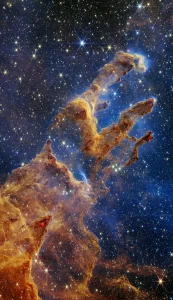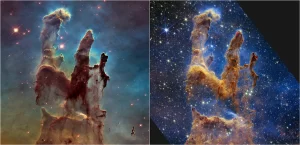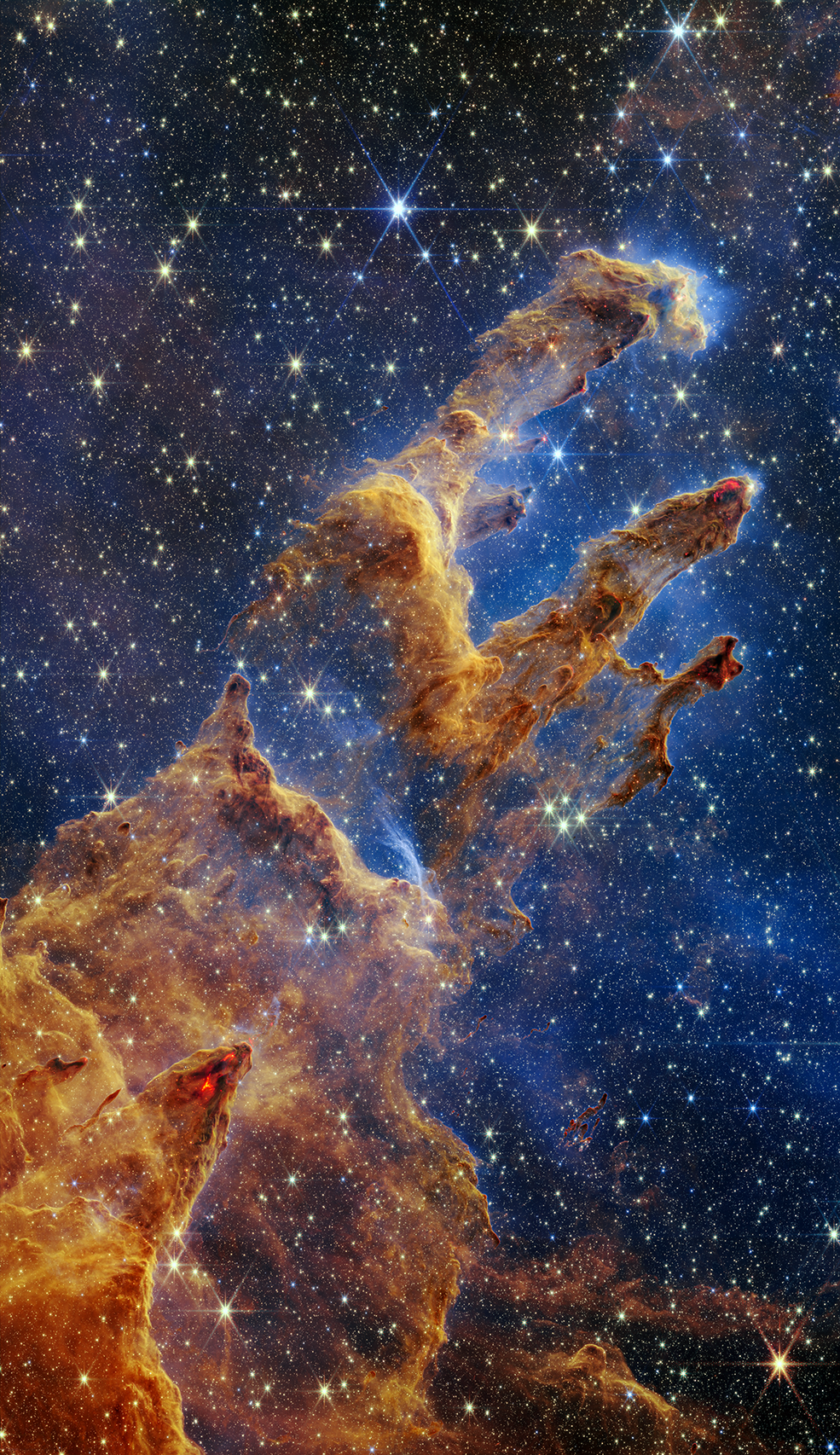This strange finger-like shape is part of the massive star-forming Eagle Nebula, about 6,500 light-years away.
He specializes in photographing spooky spiral galaxies, Neptune’s rings and moons, and the eerie Creeping Tarantula Nebula. But ultimately the James Webb Space Telescope has focused on one of the most famous objects in the universe: the Pillar of Nature.
Even NASA knew what Webb wanted when Webb finally mastered the Eagle Nebula’s star-forming arm: “Here’s what you’d expect,” the space agency wrote.
Webb’s image was taken with a near-infrared camera (NIRCam) and shows the Pillars of Creation in great detail. NASA, which is working with the European Space Agency (ESA) and the Canadian Space Agency (CSA), said. Collaborate on Project Webb.

Bright stars twinkling on a dark blue space background. Red lava-like formations near the edges of the pillars show the glow of hydrogen molecules as young stars form supersonic jets. Meanwhile, bright red balls suspended in the mass of gas and dust indicate the positions of newborn stars (the space agency recommends zooming out to see).
As Isaac Schultz writes for Gizmodo, Webb’s supplement makes it easy to see “Michelangelo’s famous work, fueled by the canopies of the great column.“
Swiss astronomer Jean-Philippe Loys de Cheseaux first discovered the Eagle Nebula in 1745. But it was only in 1995 when the Hubble Space Telescope photographed fragments as small as the planet’s fingers. prints and share them with the public. observatories also align their devices with zones.

As Dennis Overby wrote for The New York Times, the Eagle Nebula is “one of the most prolific star factories in the Milky Way.” This vast star garden is located 6,500 light-years from Earth and is 55 light-years x 70-light-years wide.
Meanwhile, the Pillar of Creation is about 5 light-years across. The three-dimensional stream consists of cosmic gas and dust and is transparent under near-infrared light. The turbulence in the column creates dense regions called knots, and when the knots gain enough mass, they collapse, heat up, and become young stars. Periodically, these young stars shoot jet jets that collide with dust and gas at the poles, creating bow-shaped earthquakes that resemble a boat on water.
According to NASA, the area is “almost starry” and the new images of Webb will help scientists more accurately count recently formed stars. They will also review the images to better understand the amount of gas and dust in the area.
“Over time, they will gain a better understanding of how stars form and explode from these dust clouds over millions of years,” NASA said.




